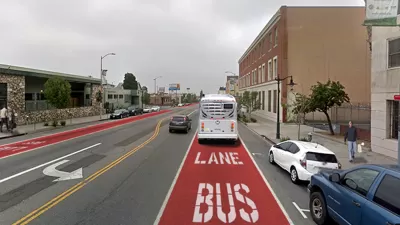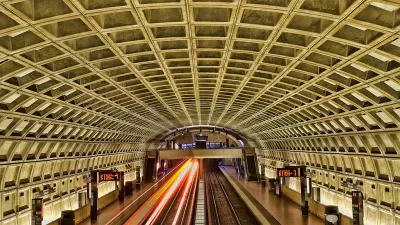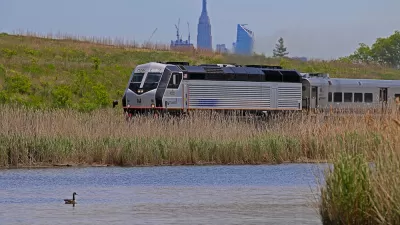The sharp historic division between commuter rail and other forms of transit has limited the ability of regional rail systems to serve more users.

Designed to serve suburban commuters, many of the country's regional rail systems don't provide efficient enough service to lure commuters out of their private vehicles, writes Jake Blumgart for Governing. "In recent decades, the vast web of rail lines that surround many older urban centers were only convenient if you worked a 9-to-5 job downtown." The stark division between "regular" transit and commuter rail in the minds of many transportation officials has left many workers with less traditional schedules without effective transit options.
"There are not such sharp contrasts between regional rail and the rest of transit systems in most wealthy European or East Asian nations. But in North America, the divide was sacrosanct. As recently as 2016, then-MBTA General Manager Frank DePaola drew a bright line between this service and the rest of the agency’s subway, bus, and light rail services: 'Commuter rail is commuter rail. It’s not transit. It’s designed to bring people into the city in the morning and take them home at night.'"
But the sharp drop in ridership during the last year has highlighted the problem with this mindset. After "commuter rail lines took a ridership hit of unprecedented magnitude," workers are slowly returning to their commutes, but "even those who go back to the office are anticipating that they will have more flexible scheduling and work-from-home opportunities a day or two a week." This means that "[i]f commuter systems try to return to their focus on white-collar suburban commuters, their ridership will be considerably thinned. To continue to attract riders and fares, they will need to change their appeal. To do that, they will need to change their frequencies and their fares."
FULL STORY: Taking the ‘Commuter’ Out of America’s Rail Systems

Planetizen Federal Action Tracker
A weekly monitor of how Trump’s orders and actions are impacting planners and planning in America.

Map: Where Senate Republicans Want to Sell Your Public Lands
For public land advocates, the Senate Republicans’ proposal to sell millions of acres of public land in the West is “the biggest fight of their careers.”

Restaurant Patios Were a Pandemic Win — Why Were They so Hard to Keep?
Social distancing requirements and changes in travel patterns prompted cities to pilot new uses for street and sidewalk space. Then it got complicated.

Platform Pilsner: Vancouver Transit Agency Releases... a Beer?
TransLink will receive a portion of every sale of the four-pack.

Toronto Weighs Cheaper Transit, Parking Hikes for Major Events
Special event rates would take effect during large festivals, sports games and concerts to ‘discourage driving, manage congestion and free up space for transit.”

Berlin to Consider Car-Free Zone Larger Than Manhattan
The area bound by the 22-mile Ringbahn would still allow 12 uses of a private automobile per year per person, and several other exemptions.
Urban Design for Planners 1: Software Tools
This six-course series explores essential urban design concepts using open source software and equips planners with the tools they need to participate fully in the urban design process.
Planning for Universal Design
Learn the tools for implementing Universal Design in planning regulations.
Heyer Gruel & Associates PA
JM Goldson LLC
Custer County Colorado
City of Camden Redevelopment Agency
City of Astoria
Transportation Research & Education Center (TREC) at Portland State University
Camden Redevelopment Agency
City of Claremont
Municipality of Princeton (NJ)





























